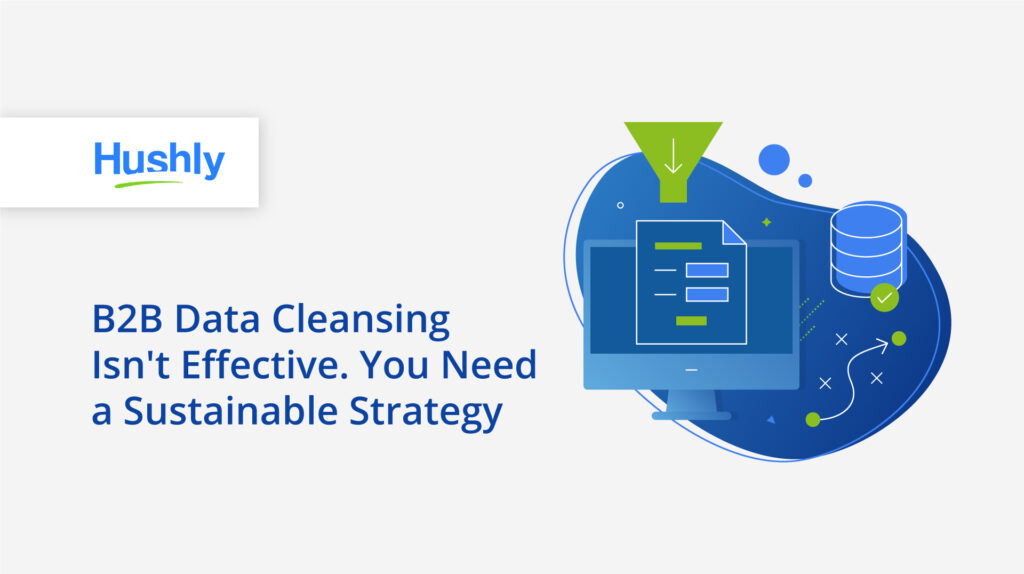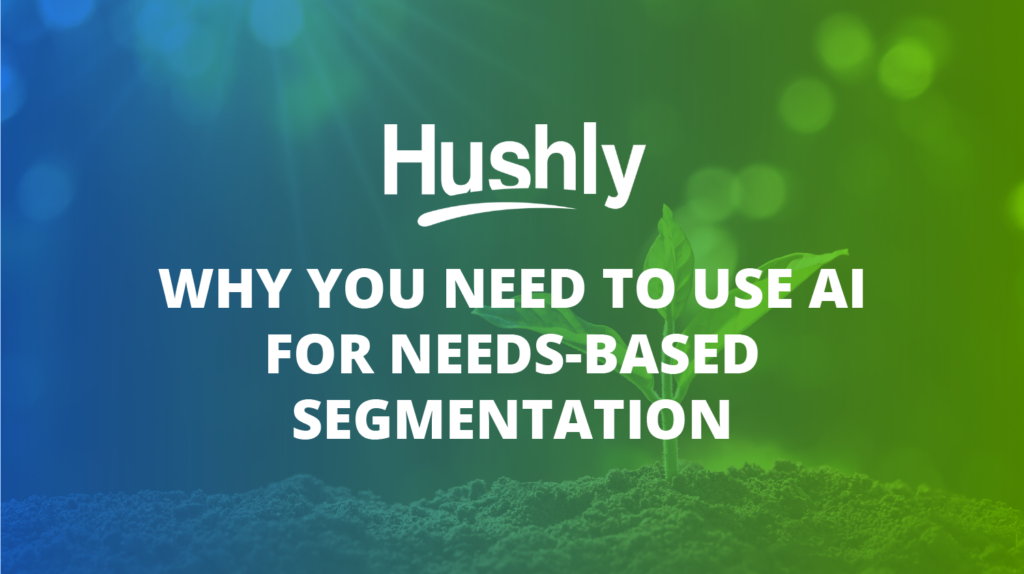Filters
Content Type
Topic
B2B Marketers Need to Prioritize Hyper-Personalization

Now more than ever, the digital experience you provide can make the difference between loyal conversions and one-time bounces.
Business has shifted online in the wake of COVID-19. Twitter, for example, realized that the low overhead from remote work was too great to pass up.
B2B is no different. Every sector is looking to improve their marketing and cut corners without sacrificing quality.
That’s why hyper-personalization is so critical today. Not only does it create the unique experience your customers expect, but it also helps you squeeze the highest ROI out of your marketing budget.
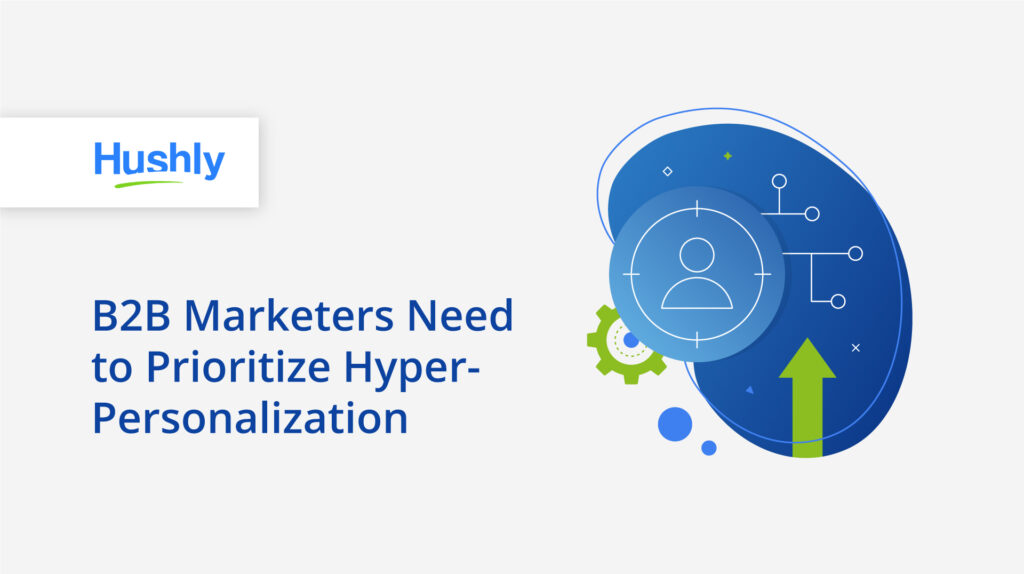
What’s Wrong with Standard Personalization?
A personalized experience is mandatory for hooking first-time visitors, earning trust, educating your audience, and winning conversions. In fact, 85% of B2Bs say they expect personalized content during the very first touchpoint.
Despite its importance, only 20% of organizations are running effective personalization strategies. Even worse: The other 80% of businesses expect to completely abandon their data-driven personalization efforts by 2025 due to poor ROI.
Regular data-driven personalization falls short for a few reasons.
It’s Reactionary
Your website needs to provide personalized content in real-time – anything else won’t work.
Traditional personalization goes like this: A lead visits your website, you hope your content interests them, they sign up for your mailing list, you follow up with personalized emails and social media posts.
Nurturing should begin while leads are still on your website. Plus, B2B needs change as they go through the buying cycle. Retroactive personalization means you’re always two steps behind.
It Relies on Outdated, Incomplete, or Incorrect Data
If you haven’t noticed, people aren’t always truthful on lead magnet forms. Plenty of folks just don’t want to hand over their company details to every website they visit – let alone their primary email address.
Not only that, but 34% of job titles/functions, 34% of company names, and 37% of email addresses change every year. Every month, pieces of your database goes bad.
Sadly, 62% of organizations are relying on data 40% inaccurate to drive their personalization strategies.
You can’t write an essay on botany by referencing a medical textbook. Unfortunately, that’s essentially what 80% of B2Bs are trying to do with their personalization strategies.
It’s Not Truly Personalized
Yes, firmographics are important for learning about your audience, building account-based marketing strategies, and creating content itself.
However, segmenting your audience by firmographics to drive your personalization strategy isn’t enough. Why? Because it’s not truly personalized.
If you have three distinct audience segments with ten leads in each segment, the ten leads in each segment all have completely unique needs/problems. Plus, they’re all at distinct stages of the buying process.
Sure, you can bet that your content will be slightly more relevant for each segment, but it will never be personalized enough to address every visitor’s unique needs at every touchpoint.
What are the Benefits of Hyper-Personalization?
Hyper-personalization solves all the problems mentioned above:
- It’s based on real-time interaction.
- It uses the most up to date and accurate data.
- It offers a unique experience for every visitor, every session.
If you haven’t launched a hyper-personalized experience yet, you might want to reevaluate your strategy.
By the end of 2018, only 9% of organizations (across both B2B and B2C) said they had finished implementing a hyper-personalized marketing strategy. Less than a third said they were working on it and nearly half were at least talking about it.
While many B2C companies have excelled at delivering hyper-personalized experiences to their visitors, however, B2B still lags.
Providing your B2B buyers with hyper-personalized experiences will set you apart from competitors. Plus, it’s just plain effective: 80% of organizations said hyper-personalization was either “somewhat” successful or “best-in-class” for meeting their goals.
What kind of goals? Well, brands say hyper-personalization helps nearly every other aspect of their marketing strategy – from learning about customers and applying insights to creating a better experience for customers:
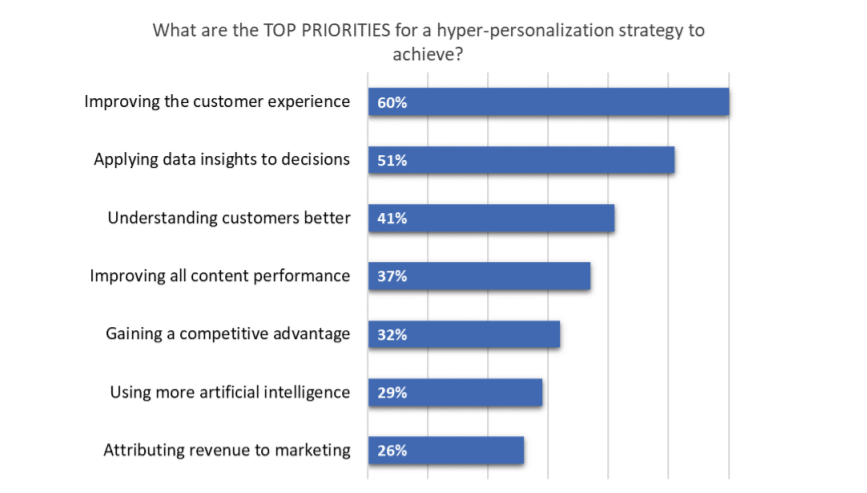
Unlike traditional personalization, hyper-personalized experiences create a positive cycle:
- A lead visits your website
- AI-driven tools analyze their browsing behavior and offer a personalized content selection.
- The lead clicks on different pieces of content they find interesting.
- The AI learns more about them and improves.
- You can use this high-quality browsing data to create more blog posts, eBooks, and content assets.
- You can follow up with highly personalized social media retargeting or email marketing campaigns.
You’re always working with the more current and accurate data possible to drive your marketing decisions. That’s why a hyper-personalized experience delivers instant engagement and ROI as well as long-term loyalty and conversions!
Bringing Netflix Hyper-Personalization to Your B2B Website
Artificial intelligence is the key to implementing a hyper-personalization strategy. Yes, it’s a lot like Netflix. Every visitor gets a completely unique experience – whether they’re a known lead, customer, or anonymous visitor.
That’s the beauty of AI-driven personalization: You don’t have to demand visitors hand over their personal information before you can start nurturing them with personalized content.
When someone arrives at your website, the AI engine kicks into action immediately using their browsing behavior and third-party intent data to understand their needs and stage of the buying cycle.
AI-driven personalization tools include:
- Self-nurturing landing pages
- Adaptive content hubs
- Content-packed exit intent popups
As you can imagine, AI-driven personalization is especially handy for account-based marketing. If a visitor reads a blog you’ve written for non-profits or browses a case study for a specific vertical, the AI engine pays close attention to this. From there, it offers relevant pieces of content for their vertical or organization.
You can then use these on-site analytics to consider which accounts to target in the future.
Hyper-personalization doesn’t end when someone gives you their email address either.
Instead of asking leads to give you their name, company name, company size, and all other types of details, the AI handles it. The system cross-checks every entry’s business email address with public information on LinkedIn to build comprehensive profiles.
In other words, your database is always accurate.
Wondering how AI-driven hyper-personalization can improve your B2B website experience? Learn about how it works and what it looks like in action!
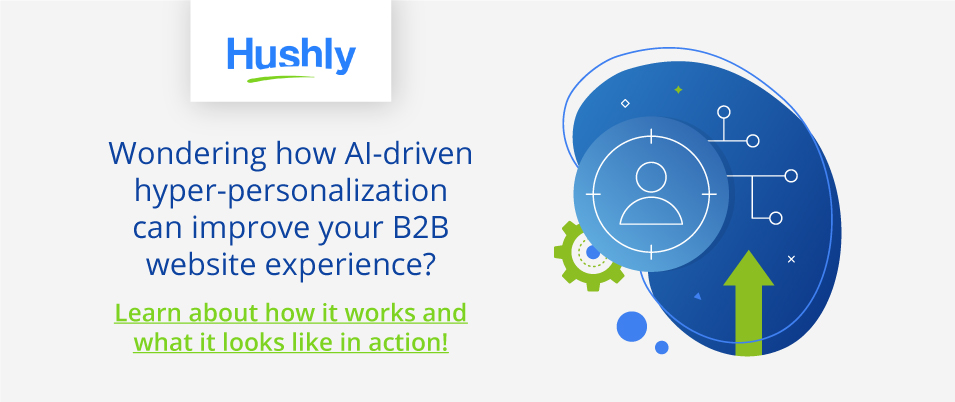
The post B2B Marketers Need to Prioritize Hyper-Personalization appeared first on Hushly.

